*Please note: this post contains affiliate links.
Even though I can read music fluently, I LOVE to learn new music by ear. There’s really no better way to get to the point of what something is supposed to sound like than to listen to it over and over.
Of course as a teacher, I force encourage all of my students both to learn to read music and to gain the skills to learn by ear. Only a small percentage of the population is truly tone deaf, so this is something that almost anyone can learn, regardless of age. And yes, there is such a thing as talent (albeit overrated) and some people will learn faster than others; but anyone can get better.
In lessons, the way I work on it with students is by playing “Hide and Seek for Notes.” Basically, they turn around so they can’t see me, I play a pitch on my instrument, and they have to find it on their instrument. When they are brand-new, I will often give them a hint like “this note is on your A string.” As they progress, I won’t give them any hints, or I will even give them a couple of notes in a row (especially if they’ve listened to the piece or tune ahead of time like they were assigned to… #teacherlife)
You can easily get this kind of practice for free with a friend, just take turns doing the “hiding” and “seeking.” Who says it’s just for the little ones? J You’ll be amazed at how much better you get after a while! (To that end, would a “Hide and Seek to Improve Your Aural Skills” audio/video course be helpful to people?)
Okay, on to the fun stuff – how do we learn from the masters? (Or the MacMasters, for that matter?)
Amazing Slow Downer
My favorite app for learning by ear is called. I love that it’s right on my phone and can import any song from my music library.
It works like any other music player, with a few key (read: awesome) differences:
- Pitch: This feature is not as useful if you’re trying to learn pitches as you hear them, but utterly fantastic if you’re trying to transpose!
- Speed: This is the gold, as far as I’m concerned. Slow the speed down as low as 25% of the original speed, or (just for kicks) up to 200%!
- Loop: Play the part you’re working on again and again until you’ve got it! (Or a specified number of times, at least).
YouTube
Okay, I love Amazing Slow Downer, but this feature of YouTube is my new favorite thing! OH my gosh – did you know that you can change the speed of YouTube videos without changing the pitch? Yeah, you guys probably knew that already, but I didn’t until just recently. This is SO helpful when learning by ear!
Just like in the ASD program, you can change the speed of the audio without changing the pitch. PLUS – the video slows down, and now you can see what a player is doing with their bow! Whoa, what a game changer!
All you have to do is:
- Choose a video (like this amazing one of Liz Carroll tearing it up)
- Click on the “Settings” gear in the lower right-hand corner
- Click on “Speed,” and select how fast you want Liz to play. Yay!
Finally – trust the process. Celebrate the little wins. (I found that one note again! Yeah!) I love this article, which has some additional tips, and a lot of nice encouragement
Do you guys have other tools you like to use for learning by ear? Leave a comment and let us know!
